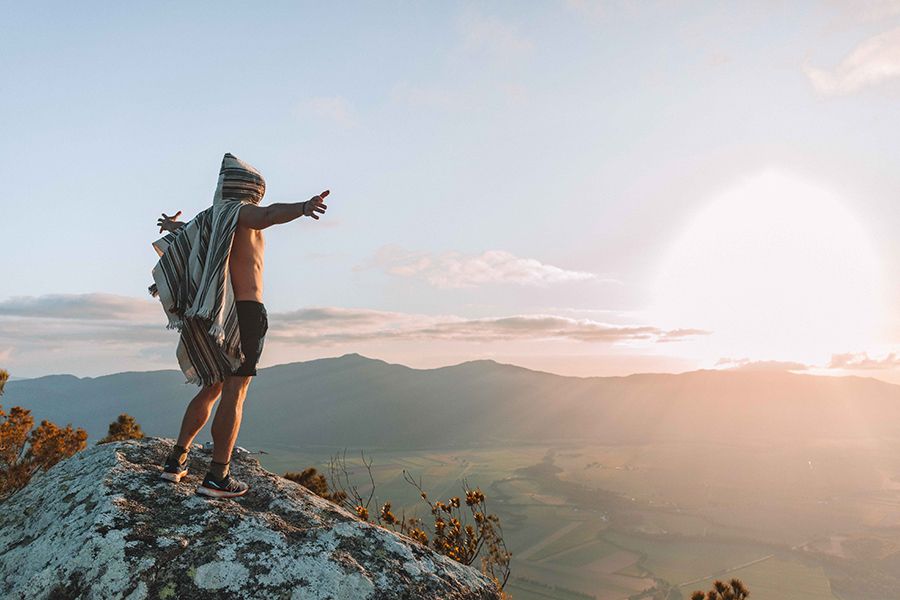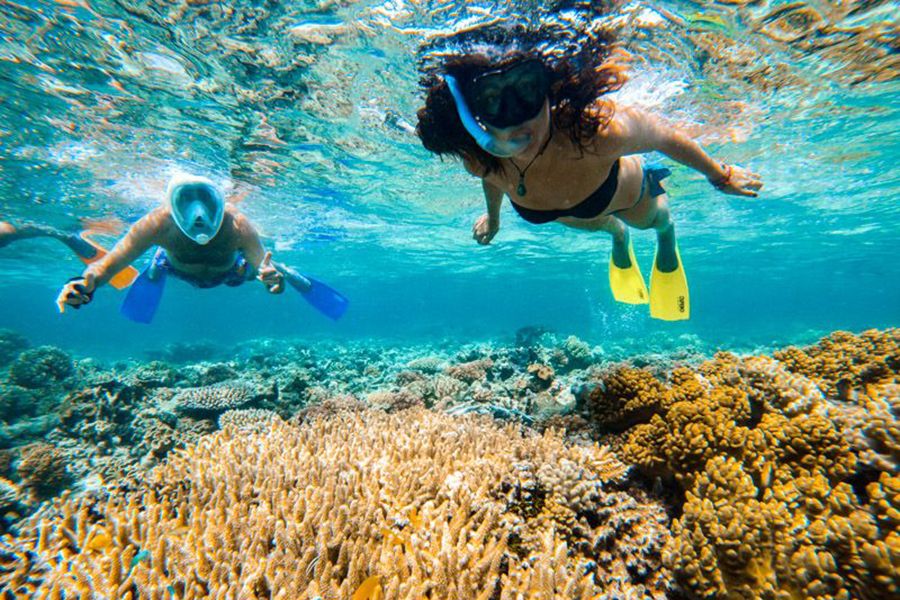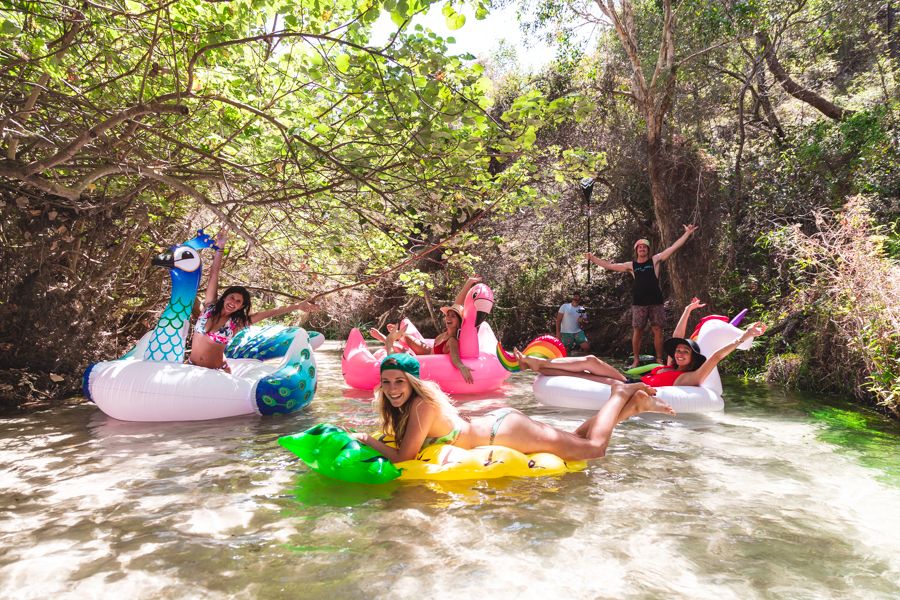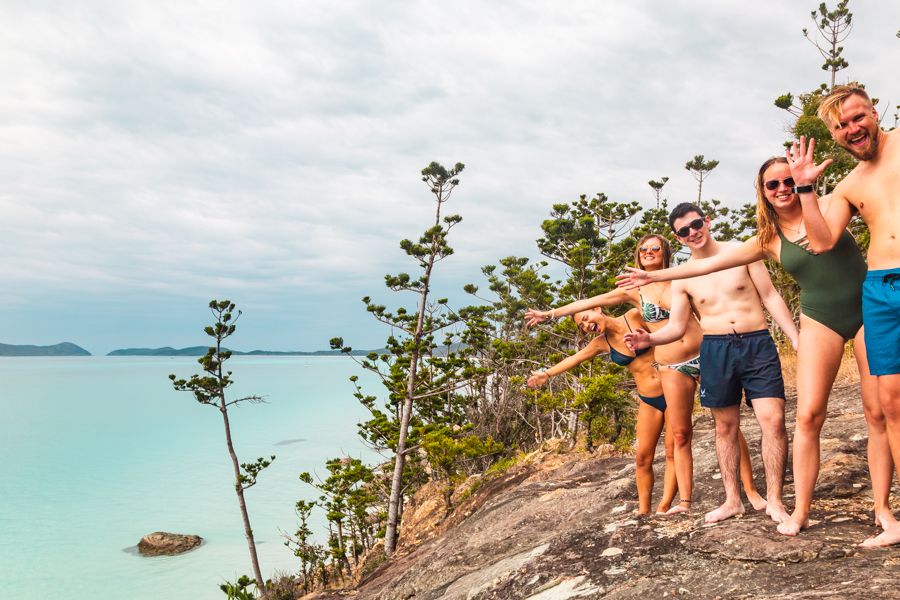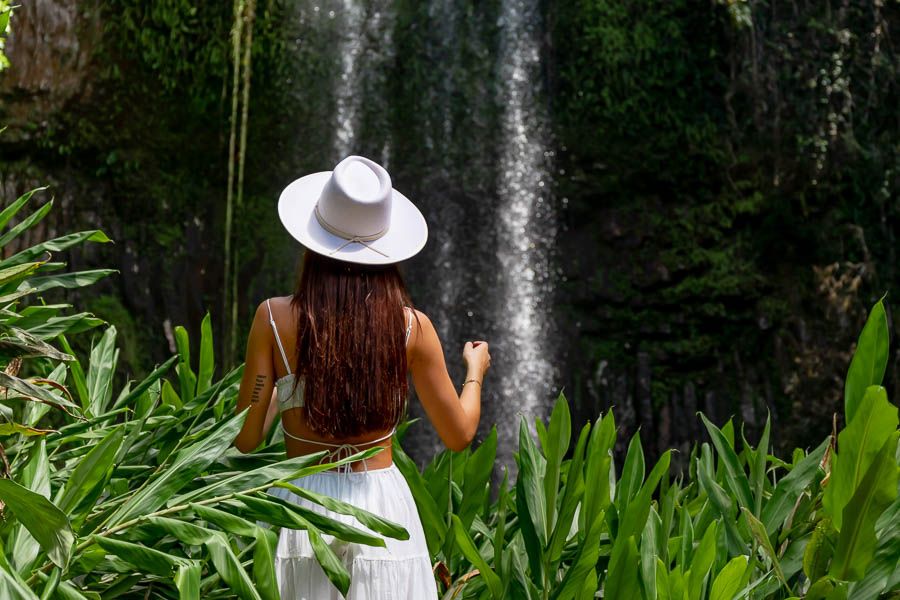Is Australia Safe To Travel Alone?

February 7th, 2024
12 minute read

Australia is an incredibly safe country to backpack and travel alone or in a group. If you’re a solo traveller, feel at ease knowing that even the major cities are safer than many others around the world. The crime rate is low and so is the likelihood of terrorism. Pickpocketing is uncommon, especially when compared to Europe. Gun ownership is illegal and basic healthcare is accessible. In the 2021 Global Peace Index, Australia ranked 16th in the world, just after Sweden.
Dangers that do exist in Australia include extreme weather and driving accidents (particularly in remote areas). However, these don’t make Australia any more “dangerous” than other countries as long as you’re aware of the harsh conditions and road risks. Wildlife risks like snakes, jellyfish, crocodiles and sharks are also concerning, however, familiarising yourself with the well-known safety precautions is a sure-fire way to enjoy an accident-free holiday. Overall, Australia is a safe and easy country to travel solo, in a couple or group.
Quick links
- Australia's biggest dangers
- Solo female travellers in Australia
- Australia's culture and atmosphere
- Australian cities vs rural Australia

Check out our awesome range of guided group itineraries for a tried-and-tested safe 'n' fun way to explore the East Coast of Australia, and make new friends on the road!
What are the biggest dangers in Australia?
Australia’s infamous dangers of deadly wildlife indeed dominate the conversation, but in reality, driving, UV and drinking often pose more of a threat! Get your head around these local tips to stay savvy in Australia!
Sun & UV
That’s right. You might hear about snakes, spiders and sharks, but the sun is actually more of a health hazard to visitors in Australia. With an exceptionally high UV index, scorching temperatures and brutal humidity, it really is called the “sunburnt country” for a reason. If you’re travelling in summer, temperatures along the East Coast can reach 40 C on a hot day, with humidity peaking in Queensland. Tourists are often caught with sunstroke after too long in the sun, not to mention those painful, tomato-red sunburns. While it may seem all and well to cool off in the ocean, remember to slip (on a shirt), slop (on sunscreen), slap (on a hat) and slide (on your sunglasses)! Queensland actually has the highest rate of diagnosed melanoma skin cancer in the world due to the intense sun, so stay sun safe out there.
Pro tip: to escape the heat, visit Australia in Spring or Autumn! Check out our guide on when to backpack Australia for more information.

Drowning & Beach Safety
Unfortunately, Australia’s drowning death toll is made up of mostly visitors on holidays who underestimate our often intense currents and swells. While there are many lifeguards on duty at main beaches, a huge part of protecting yourself while in the surf is up to you! When you’re at the beach, make sure you play it safe by following these tips:
-
Only swim between the red and yellow flags (these indicate that a lifeguard is on duty).
-
Swim to your ability and the conditions.
-
Learn how to identify a rip, and keep calm if you do get stuck in one.
-
If you need lifeguard assistance, wave your arm in the air.
In the end, your swim safety is up to you, be it in the surf, a river, lake, waterfall or pool. Keep between the flags at the beach, as any swimming you do outside of them is completely at your own risk. Rips and currents can be unobvious but fatal if you’re oblivious and not prepared for the reality of the sea.

Extreme Weather
In the last decade alone, Australia has endured floods, bushfires, heatwaves, droughts and cyclones. A prominent place for brutal, extreme weather events, climate change has seen Australians suffer even more through ample natural disasters. Before you book your trip, do a bit of research on the places you’re visiting and any extreme weather warnings for that time. The Bureau of Meteorology is a good place to get any alerts, as these potential events can impact your travels due to evacuation, closed roads and travel dangers.

Dangerous Roads
As mentioned, Australian roads have an increasing number of trucks and SUVs. Statistically, these cars are more likely to hit other cars and pedestrians. Remote and rural roads often have higher speed limits, and people will still drive dangerously and speed. Know the road rules, drive defensively and with confidence in Australia. Luckily, city roads are far less chaotic than in some cities in Europe, Asia and the Middle East, so while stressful for some Aussies, city driving may be a breeze for you.

Wildlife on the road in Australia
Wildlife on the road is also a risk, with kangaroos and wallabies commonly causing road accidents. If you encounter wildlife on a road or highway, it’s important not to swerve, as doing so at high speeds can be fatal. If you can, slow down as soon and safely as possible, minimising impact. Using your horn to divert wildlife is a good tactic if you can, as the loud sound often helps the animals know where you’re coming from as fast cars can confuse them. Avoid driving in rural places at sunset, dusk, night and during heavy rain if possible, as it’s harder to see wildlife. Use your high beams, and slow down for the wildlife!

Deadly Animals
Okay, so while Australia does have more deadly animals than a lot of countries, your chance of interacting with any is pretty low, particularly if you know a bit about the do’s and don’ts! As a rule of thumb, don't approach, attempt to pat or play with any animals in the wild. If you want a koala cuddle, check out Australia Zoo... but be mindful that animals in nature will defend themselves if approached. So here are the animals you should know about, and how to keep yourself safe in the bush!
Crocodiles
Crocs are an ancient apex predator, and they certainly fit the bill of a deadly Australian creature. Territorial, scaly and huge, you want to avoid these animals in the wild. However, what many people don’t know is that only saltwater crocodiles pose a big threat to humans, not freshwater crocodiles.
Saltwater crocodiles are found in Far North Queensland, from around Gladstone to the northern tip of Australia (also called “croc country). In these areas, crocodile safety signs are prevalent and outline where you can and cannot swim, eat, camp, fish and boat. Heed all of these signs with caution and be “croc-wise” when you’re in Queensland!

Spiders
Another classic Australian fear is spiders, and there are a handful of dangerous species in Australia. These include funnel webs, redbacks and mouse spiders. However, you’re not that likely to come across deadly spiders during your travels, and are more likely to see the intimidating but non-venomous huntsman. These guys are big and hairy but positively harmless to humans, so don’t freak out too much!

Snakes
Australia does have a lot of snakes, found across most types of landscapes like forests, deserts, sand dunes, islands and bush. While you won’t find snakes slithering around the city, if you are heading to a beachy or busy area, it’s a great idea to brush up on some snake identification for your area, and how to respond if you see one. Luckily, most deadly snakes are quite scared of humans and prefer to run away from you rather than face you. However, some snakes, like brown snakes and tiger snakes, can be territorial so it’s important to stay calm and back away slowly if you come across them.

Jellyfish
A common occurrence between October and May ("Stinger Season"), poisonous jellyfish such as the Irukandji and Box species populate the waters in North Queensland. Rest assured though, any Great Barrier Reef tours you do in Cairns or the Whitsundays will supply you with a "stinger suit," a light, full-body wetsuit designed to protect you from any potential stings.

Sharks
If you’re swimming in the ocean or surfing, you may fear shark attacks. While not irrational (sharks do live in the ocean), shark encounters are extremely rare and only 30% of encounters are fatal. In fact, there are many beautiful sharks that are harmless to humans that you may come across when snorkelling (the wobbegong and lemon reef shark are my favourites!). If you’re swimming between the flags or surfing at a popular spot, you are extremely unlikely to see a shark. There are surf spots where sharks are known to inhabit, however, these are usually pretty extreme breaks for professionals. Do your research if you’re heading out into unknown waters, just like the locals.

Kangaroos
While cute and iconic to Down Under, it’s important that you never approach a kangaroo in the wild. You can get up close and personal with these creatures in sanctuaries like Australia Zoo, however kangaroos in their natural habitats are different stories. Although they are fluffy, kangaroos can be aggressive when approached and have powerful legs and sharp claws. As mentioned, kangaroos can also be a huge danger on the road.

Ticks
If you’re hiking through the bush, make sure you check yourself for ticks at the end of the day. Ticks can carry diseases, and hide in crevices. If you do have a tick, it can be hard to get out, and you don’t want to break the tick. Seeking medical advice is advised.

Xenophobia
Despite being an economically wealthy and highly educated country, racism, sexism and homophobia do exist in Australia. While Australia is a multicultural and progressive country in many ways, national surveys show that POCs, people in the LGBTQIA+ community, international students, immigrants and Indigenous Australians face bias. Xenophobia is not as common in cities where diversity and education rates are higher.

Is Australia safe for solo female travellers?
Australia is an excellent country to travel for solo female travellers. Whether you’re staying in hostels, a campervan or resort, the overall safe and welcoming feel of Australia makes for an easy, solo trip. With ample beaches, forests, islands, cities and towns laden with accessible experiences, it’s no wonder thousands of women solo backpack Australia every year!
The drinking culture in Australia
My biggest tip for female solo travellers is to be mindful of the drinking culture, in party and more low-key towns alike. Australians are renowned for getting on the grog, naturally resulting in some aggressive behaviour at the end of the night. Watch your drink, don’t try to keep up and know when to call an Uber back to your accommodation.

What's the vibe in Australia?
A “help-your-mate-out” attitude
Australia is known for a laid-backed, relaxed and friendly vibe. Locals are accommodating and generally happy to lend a hand in any sticky situations. This makes everybody, both tourists and locals, feel safe in public spaces. This open attitude shared by many Australians makes visiting Down Under a really welcoming experience, and it also means it’s super easy to make friends, ask for directions and get local recommendations. In short, perfect for a solo backpacker!

Australian cities vs rural Australia
Australia is a vast, varied country, with an array of different destinations. With friendly beach spots, quiet rural towns, bustling central cities and incredibly remote rainforests, how “safe” Australia is really fluctuates depending on where you are and what you’re doing.
Are Australian cities safe?
Australian cities, just like other cities around the world, are busier and more populated than towns. However, unlike most of the world’s hubs, Australian cities are ranked highly for their safety. Sydney and Melbourne are both listed on the safest cities in the world's top 10! Smaller cities like Brisbane, Cairns and Hobart also have low crime rates, low burglary rates and fewer driving incidents than rural areas relative to population.
Nevertheless, it’s always a good idea to be mindful of possible risks when visiting any city, as you are still a tourist in a foreign place. Keep an eye on your belongings, be mindful of security and listen to your gut when you’re out, especially at night. Australia has a pretty prevalent drinking culture, so make sure you know your limits!

Is rural Australia safe?
Geographically, the majority of Australia is pretty “rural” which means country-town type hubs, with fewer shops, housing and people. Once you drive a few hours inland from the coast, you can expect remote townships built around agriculture, horticulture and mining industries. These towns get smaller and further apart the further inland you drive. The atmosphere in these towns can be extremely different from cities and coastal towns, and many backpackers end up working in them to fulfil their second WHV requirements.
The roads in rural areas in Australia have higher fatality rates, due to wildlife, drink driving and speeding. So, if you’re getting behind the wheel, make sure you understand defensive driving and avoid hitting the road at “golden hour” sunset and night when it’s harder to spot kangaroos. There are also more snakes in remote and rural areas when compared to cities, and the sun can be a lot harsher. Mobile coverage is also not as reliable when you get really remote, so remember to have your maps downloaded for directions! On average, the voter base in rural Australia is more conservative when compared to cities. However, it’s super common for backpackers to complete their farmwork in rural towns, meaning that many farms and stations have a multicultural, welcoming vibe. Overall, as long as you’re prepared for more wildlife, the heat and spotty reception, rural Australia is still safe and a great opportunity for travellers to get off the beaten path.

Check out my favourite off-the-beaten-track regional towns in Australia to get a good dose of small-town charm!
